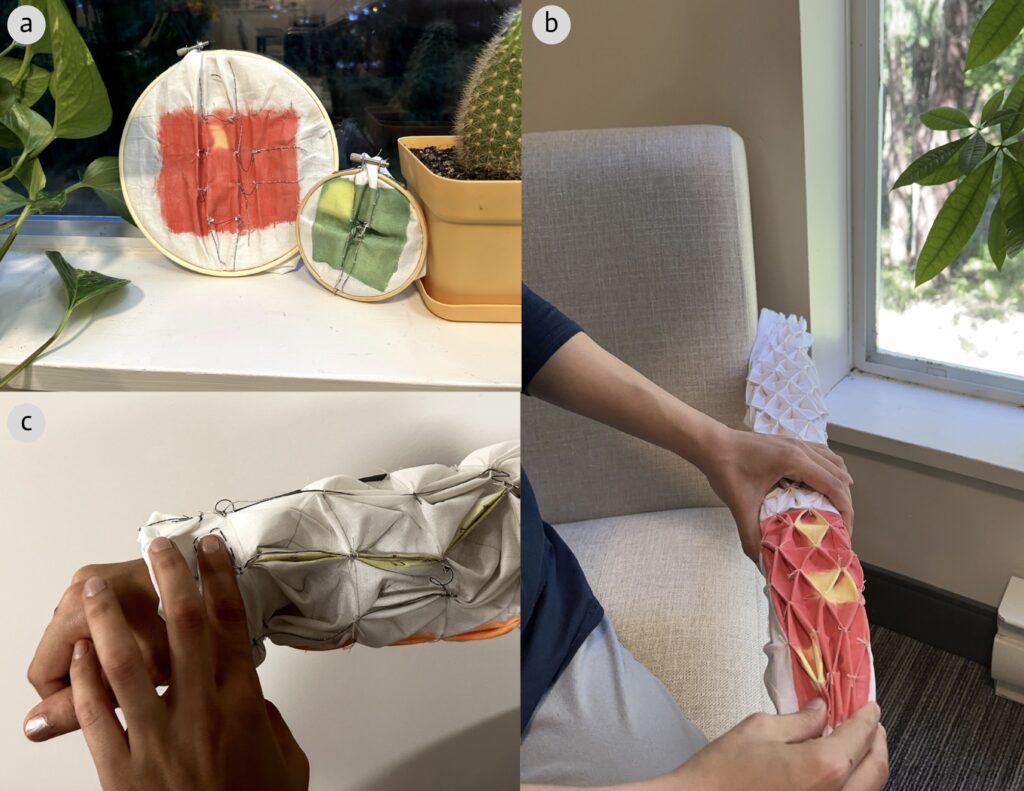This ‘smocking display’ adds data physicalization to clothing

Elastic use in the textile industry is relatively recent. So, what did garment makers do before elastic came along? They relied on smocking, which is a technique for bunching up fabric so that it can stretch to better fit the form of a body. Now a team of computer science researchers from Canada’s University of Victoria are turning to smocking to create interesting new “data physicalization” displays for clothing.
These “smocking displays,” part of the researchers’ VISMOCK approach, can convey information through changes in form and changes in color. The practical implementation of this idea would be up to the garment maker, but there are many intriguing possibilities. Imagine, for instance, that your shirt sleeve could get tighter to indicate that it is time for an appointment on your daily calendar. Or if your pants could show the current time.
Both of those concepts — and much more — are entirely feasible. The team made that true by combining two techniques. The first is impregnating the fabric with thermochromic pigments that change color in the presence of heat. Heating elements embedded in the fabric, controlled by an Arduino Mega 2560 board through MOSFETs, influence that change. Resolution is low, because heat spreads, but this is enough to show quite a bit of information.
The second technique is smocking, but with special SMA (Shape Memory Alloy) wires and springs. Those can be deformed, but will then return to their original shape when current (and heat) runs through them. By integrating SMA into the smocking pattern, the fabric can change shape on-demand. As with the thermochromic heating elements, this occurs under the control of an Arduino.
Image credit: B. Bakhtiari et al.